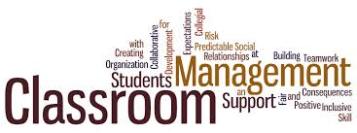We experience anxiety when we lose control over a situation, or when we are in a stressful situation. For some of the students the anxiety triggers while taking a test. The anxious feeling can start before the test or while attempting the paper. It can range from sweaty palms, forgetfulness, stomach pains, headaches etc. Slight amount of anxiety results in improved test performance. But when it increases it affects adversely on test performance. Reduce your anxiety when it interferes with your performance in three steps:
- Mentally preparing for test helps in dealing with the test; be thoroughly prepared, gain confidence in knowing the course material. Be test wise and have a plan for taking the test. Initial stress or tension is normal, but relax once you get the paper in your hand. Take deep breaths and it will surely do wonders in calming you. Pace yourself in answering the number of questions you are required to do. Do not spend most of your time on questions that have less weightage.
- Physical preparation helps in reducing anxiety. Start preparing for the tests or exams right from the beginning and develop good study skills or habits. Rest is important for any part of the study program. Sleep early so that you can be attentive in class. People tend to face more anxiety and frustration when they are tired. Pick the time of the day when you are fresh and have high energy level for preparing for tests.
- Practice for exams. When you do something that is familiar it tends to lower anxiety. Take practice tests at home, it provides the opportunity to prepare and become familiar with the topics and the way you have to answer them.
Practice, practice and practice; the more you practice, the more you have command on your subject, the more confident you will be, and will improve in topics or areas that you are weak in. Engage in positive self-talk, irrational negative thinking diminishes the confidence. Instead of saying, “I can’t pass no matter what I do” or “I can’t learn” adopt realistic attitude: “I have prepared for the exam, and I can do better by putting in all my effort” or “I am working hard and will get good numbers”. Work hard and think realistically. Do not wait till the last moment to prepare for your test.



